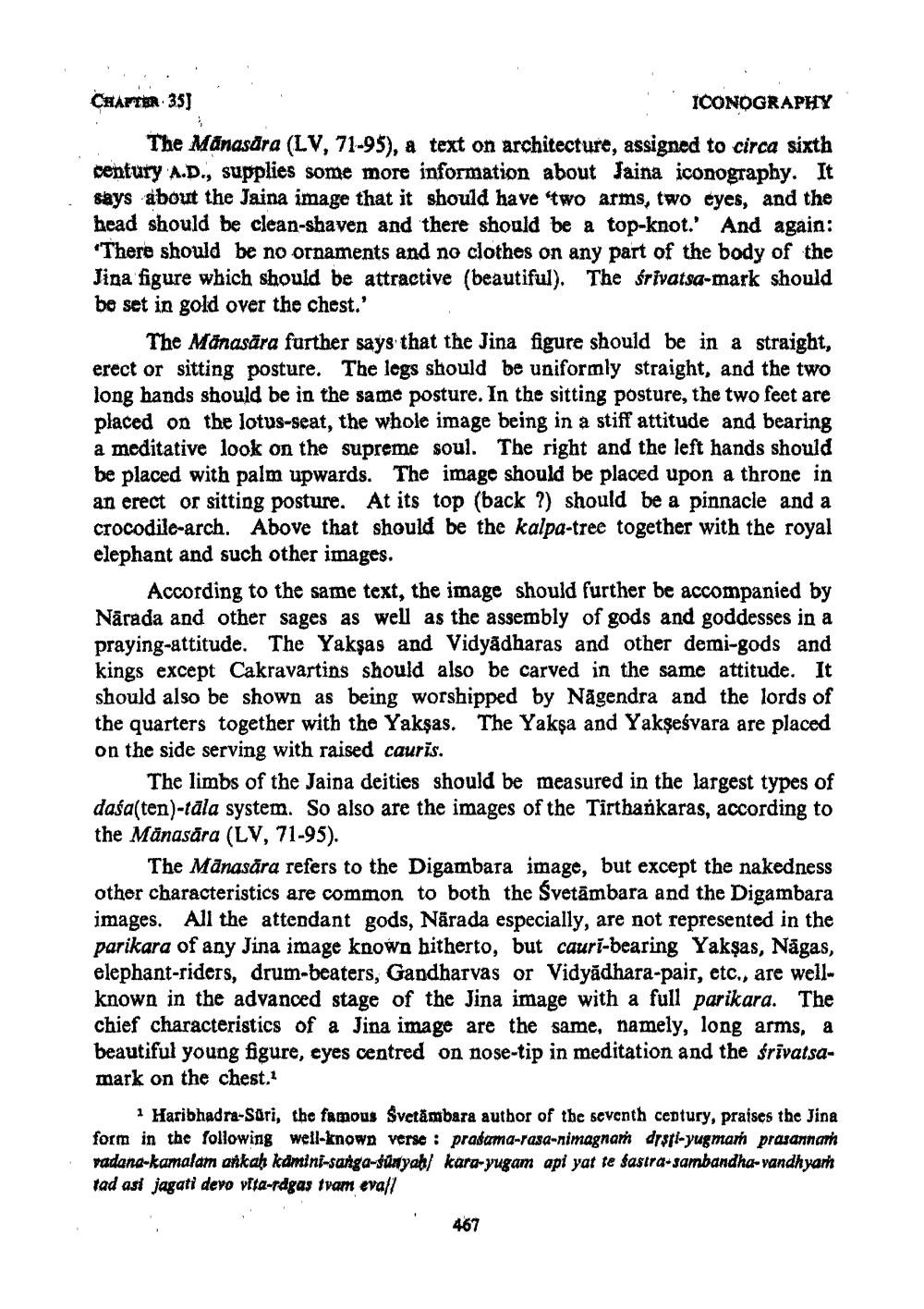________________
CHAPTER 35)
ICONOGRAPHY The Mänasära (LV, 71-95), a text on architecture, assigned to circa sixth century A.D., supplies some more information about Jaina iconography. It says about the Jaina image that it should have two arms, two eyes, and the head should be clean-shaven and there should be a top-knot.' And again: *There should be no ornaments and no clothes on any part of the body of the Jina figure which should be attractive (beautiful). The srivatsa-mark should be set in gold over the chest.'
The Mänasära further says that the Jina figure should be in a straight, erect or sitting posture. The legs should be uniformly straight, and the two long bands should be in the same posture. In the sitting posture, the two feet are placed on the lotus-seat, the whole image being in a stiff attitude and bearing a meditative look on the supreme soul. The right and the left hands should be placed with palm upwards. The image should be placed upon a throne in an erect or sitting posture. At its top (back ?) should be a pinnacle and a crocodile-arch. Above that should be the kalpa-tree together with the royal elephant and such other images.
According to the same text, the image should further be accompanied by Nārada and other sages as well as the assembly of gods and goddesses in a praying-attitude. The Yakşas and Vidyadharas and other demi-gods and kings except Cakravartins should also be carved in the same attitude. It should also be shown as being worshipped by Nägendra and the lords of the quarters together with the Yakşas. The Yaksa and Yakşeśvara are placed on the side serving with raised cauris.
The limbs of the Jaina deities should be measured in the largest types of daśa(ten)-tāla system. So also are the images of the Tirthankaras, according to the Mänasära (LV, 71-95).
The Mānasära refers to the Digambara image, but except the nakedness other characteristics are common to both the Svetāmbara and the Digambara images. All the attendant gods, Närada especially, are not represented in the parikara of any Jina image known hitherto, but cauri-bearing Yakşas, Nāgas, elephant-riders, drum-beaters, Gandharvas or Vidyadhara-pair, etc., are wellknown in the advanced stage of the Jina image with a full parikara. The chief characteristics of a Jina image are the same, namely, long arms, a beautiful young figure, eyes centred on nose-tip in meditation and the srivatsamark on the chest.
Haribhadra-Sori, the famous Svetambara author of the seventh century, praises the Jina form in the following well-known verse : pradama-rasa-nimagnam drsti-yugman prasannar vadana-kamalam ankah kamini-sanga-Sünyah) kara-yugam api yat te sastra-sambandha-vandhyarh tad ast jagati devo vita-rdgas tvam evall
467




